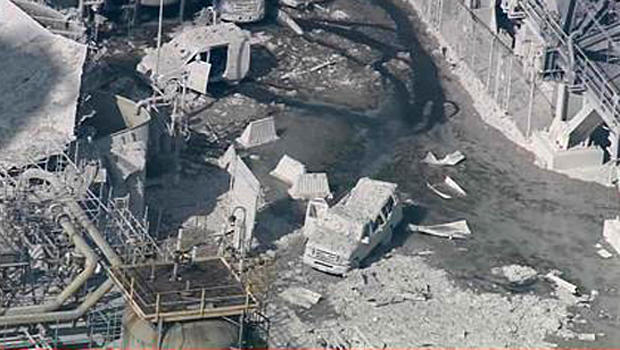Federal review: Calif. refinery explosion could have been much worse
CALIFORNIA -- When part of the ExxonMobil refinery blew up in February south of Los Angeles, smoke filled the sky and ash rained down on nearby neighborhoods.
Lorraine Harding's family lives a mile from the plant and felt the blast -- so strong, it registered as a 1.7 on the Richter scale.
"It was pretty scary," said Harding. "I thought it was an earthquake. It shook and it was loud. A big boom."
Four workers were injured, but at the time ExxonMobil told residents that no one in the community was ever in danger.
But CBS News has learned it could have been much worse.
Vanessa Sutherland, the recently appointed head of the Chemical Safety Board, the federal agency charged with investigating the accident, calls it a "near miss."
"We were really, really lucky," Sutherland said. "I think it is of concern to us, that we have a facility that had a near miss, which I actually feel very lucky about. It could have been much more catastrophic."
Catastrophic, she says, because when the explosion happened, a piece of equipment weighing 80,000 pounds was sent flying nearly 100 feet.
Sources say a photo submitted to federal investigators and obtained by CBS News shows that piece landed just a few feet from a tank containing a form of hydrofluoric acid. It's a highly toxic chemical that if released, can form a cloud of toxic gas that can drift for miles, potentially causing thousands of injuries and even death.
"HF, in our view, and my view, is one of the most hazardous and deadly chemicals. In worst-case scenarios, at deadly levels, it causes asphyxiation because once inhaled it causes respiratory problems that build up fluid and you ultimately drown," said Sutherland.
More than 200,ooo people live within three miles of the plant. And in documents filed with the Environmental Protection Agency, ExxonMobil itself estimates in a worst-case scenario release of hydrofluoric acid, all of them within that distance could be injured or even die.
It does not sound very reassuring to the community living around that plant.
"If I were in the community I absolutely would be concerned," Sutherland said.
ExxonMobil disputes the idea that was a risk in February, telling CBS News they, "strongly disagree with any claims..." that there was a "significant risk to the hydrofluoric acid unit."
They wouldn't do an on camera interview, and referred CBS News' questions about the risks of hydrofluoric acid to an industry group, the Western States Petroleum Association.
"I think the technology that are employed in these refineries, for all the hazardous materials that are used, have proven to be very successful," said Spokesman Tupper Hull.
When asked what if the risks are managed and you still have an accident, and people are killed? Is it worth that risk?
"I'm not gonna answer that question, sorry," Hull responded.
Last month, there was a leak of hydrofluoric acid at the same refinery. ExxonMobil says it was a small leak and had no impact on the community."
But Sutherland says ExxonMobil is now resisting the agency's subpoenas for information about the February explosion.
"Generally my experience as a regulator and enforcer when somebody doesn't want you to have records is because they don't want you to see what's in it," said Sutherland.
Strong words on Wednesday from the federal government watchdog charged with investigating chemical accidents. 50 U.S. refineries use hydrofluoric acid. A United Steel Workers study that looked at half of those found 75 percent had near misses within the past three years -- and 50 percent of those would have impacted a community.


